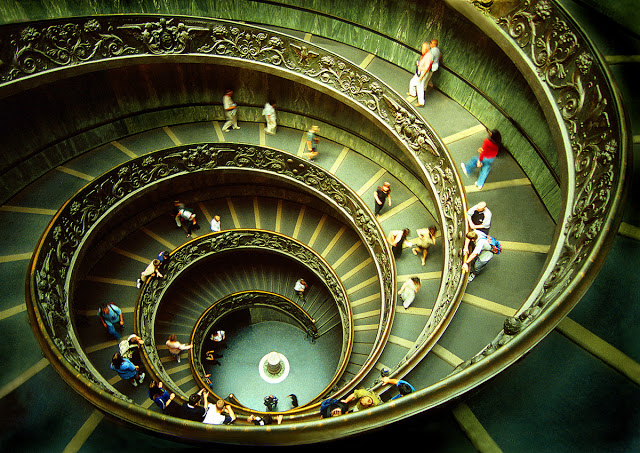I first dreamed of becoming an architect when I was in grade six.
Little did I know that architecture would teach me a lot more than how to design buildings. I was a girl who wanted to be an architect, but through the practice of architecture I discovered who I really wanted to be in the world.
In my practice, there are eight main guiding principles that I seek to follow:
1. The Principle of Unity
Before I start designing, I like to place myself on the building site and imagine becoming one with it. I try to understand how the sun and the wind moves across it, how the land slopes, what interesting features are present, where the views are, and how the existing elements on site interact with one another.
No matter how empty a site may be, I don’t believe we are ever dealing with a blank slate. We are always playing within a given context. So I like to approach the project as a conversation between the building and the land and allow solutions to emerge, rather than impose my actions on the environment.
2. The Principle of Receptivity
My own design process begins with listening—I listen to the client’s vision for the project, the site’s orientation, the character of the neighborhood, the bylaws and regulations. To be truly receptive I must be able to step out of my own way. I must remain unattached to particular ideas or predetermined outcomes.
Allowing the design process to unfold takes courage and patience. As humans we have a natural tendency to want to control the outcome of our actions. It is one thing to arrive on site and point to where “this” or “that” will go. It is something else to arrive at a site and to simply take it in. Although the first approach may inspire an initial sense of confidence or security, I find the second approach lays a much stronger foundation for the project as a whole.
3. The Principle of Ease
When executing a design I believe in following the path of least resistance. While it is necessary to push the vision of the project forward, it is counter-productive to create unnecessary struggle in a project. If a course of action is proving to be too difficult, I like to step back and consider whether another solution could be simpler, easier to build, less expensive. Usually when a solution becomes cost-prohibitive it is because somewhere the design is trying to go against the flow.
4. The Principle of Joy
This is a seed I like to nurture and cultivate in every project—the seed of Pure Joy. Joy has a very fleeting and ephemeral quality, but there are moments in design where we get glimpses of it and the project becomes very exciting. I love the spontaneous ideas that emerge that are not necessarily about function, or necessity, or practicality, but simply about joy.
I’ve had clients who wanted a “fireman’s pole” in their living room to glide down from the second floor, and why not!? I consider these moments in the project to be of true importance. Without them, it’s like going through life without stopping to smell the flowers. I suppose we could live life that way, but why would we want to?
5. The Principle of Power/Dignity
I believe that ideas that come from a place of integrity and sincerity hold their own power. Yet for ideas to grow and to become manifest in building form they must be given a protective space to develop, like a womb protects a child before they are ready to come into life.
When an idea is about to come into being is also the time when it is most vulnerable to being diluted by external forces, by the push and pull of needs, wants, should’s, could’s… It is important to let the project go through the process of sifting out what needs to go and what needs to stay. From there the project will emerge stronger and with greater clarity than before, ready to stand its own ground. Then there is nothing to add, and nothing to take away.
6. The Principle of Harmony
I believe that design should aim to reach a state of balance and harmony. In my view, balance comes from having a holistic approach towards design. Holistic to me means being all-inclusive. A balanced ecosystem in nature includes everything—every creature that inhabits it, every type of habitat. Nothing is left out, and nothing is in excess.
I think of designing a home in the same way, as an ecosystem. A holistic home includes different types of spaces: open, cozy, light, dark, lively, quiet—all of these different spaces already exist within ourselves and a holistic home accommodates and nurtures each and every aspect of ourselves. When this balance is achieved, the experience of the home is one of inner and outer peace.
7. The Principle of Leisure
In our busy consumerist culture of today even leisure has become an object of consumption. But leisure in its original concept is not about having, it’s about being. In the day-to-day I find it is important to cultivate the time and space to simply be and to connect within.
This could be done simply by turning a spare bedroom into a yoga room, or dedicating a corner of the house for meditation, or even just separating the TV from the living space. Would it be so far fetched to imagine that in the near future a “meditation room” may become as ubiquitous in home design as the “TV room” has been?
8. The Principle of Beauty
Being surrounded by beauty can be of great benefit to our mental, emotional and spiritual health. Beauty to me is not something imposed from the outside, or dependent on the fleetingness of taste or latest trends, it is something much more timeless than that.
If the design is in harmony with its surroundings, if it is based on proper principles, and if it creates a cohesive whole, then beauty naturally results from it and can be felt by all. I believe that our homes should be a reflection of our own inner beauty and the uniqueness of each individual.
In Summary: Life, Work & Practice
I never knew where the path of architecture would lead me, nonetheless I dared to follow my bliss. What I discovered is that when we are following our bliss, our work also becomes our spiritual practice. Work as a spiritual practice is never finite, never predictable, and always evolving.
No matter what type of work we do, when we practice from within, the external results are always more meaningful, truthful, and purposeful. In an age of sprawling cities, greenhouse gases and fast food, I feel it is especially important for us building professionals to start practicing from within. Through the building of our homes, our neighborhoods, and our cities, we are creating and shaping our own reality. And we want that reality to be a reflection of what we truly are, timeless and beautiful beings.
Love elephant and want to go steady?
Sign up for our (curated) daily and weekly newsletters!
Editor: Travis May
Photo: Sami Rahman/Pixoto







Read 1 comment and reply